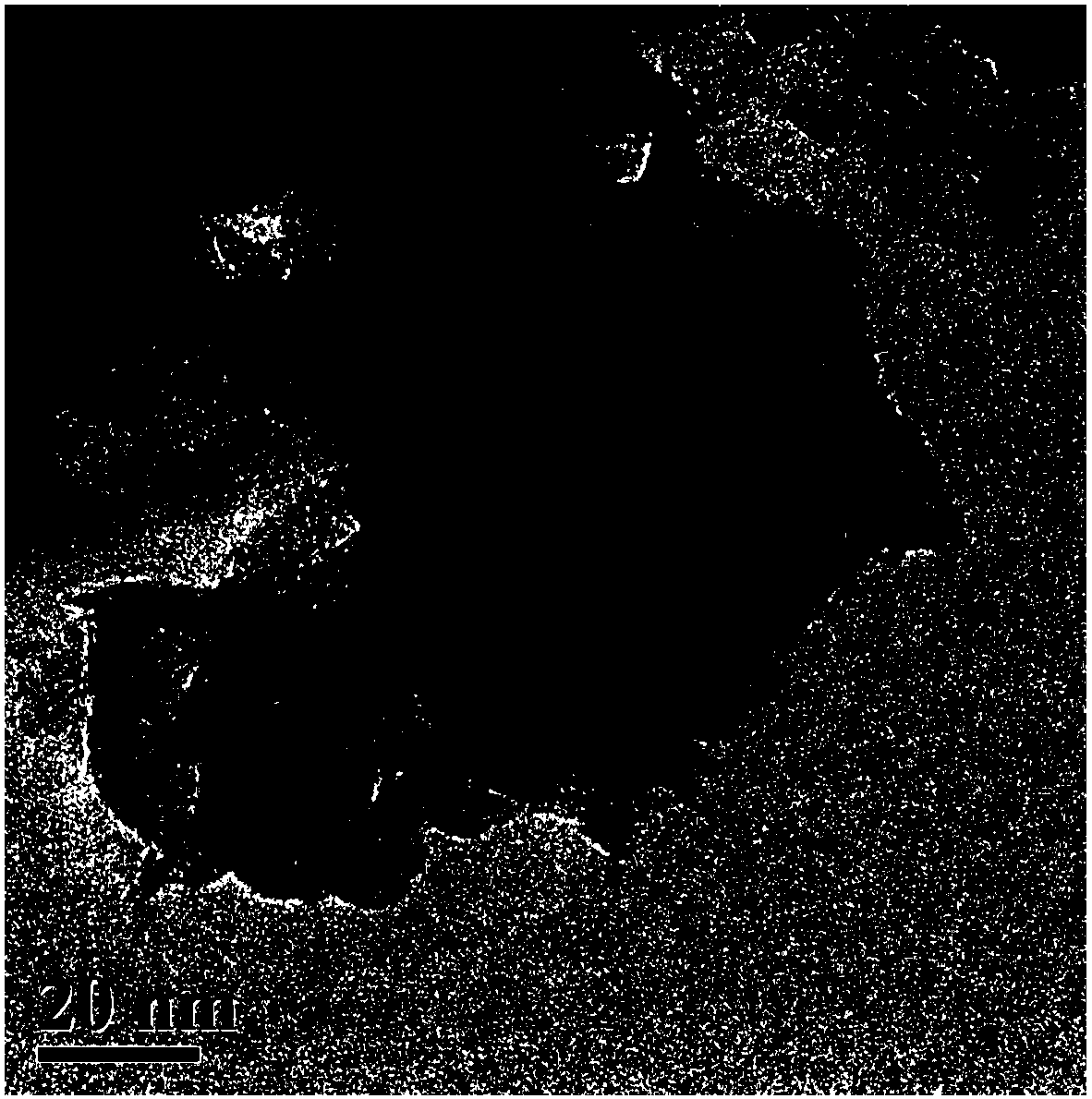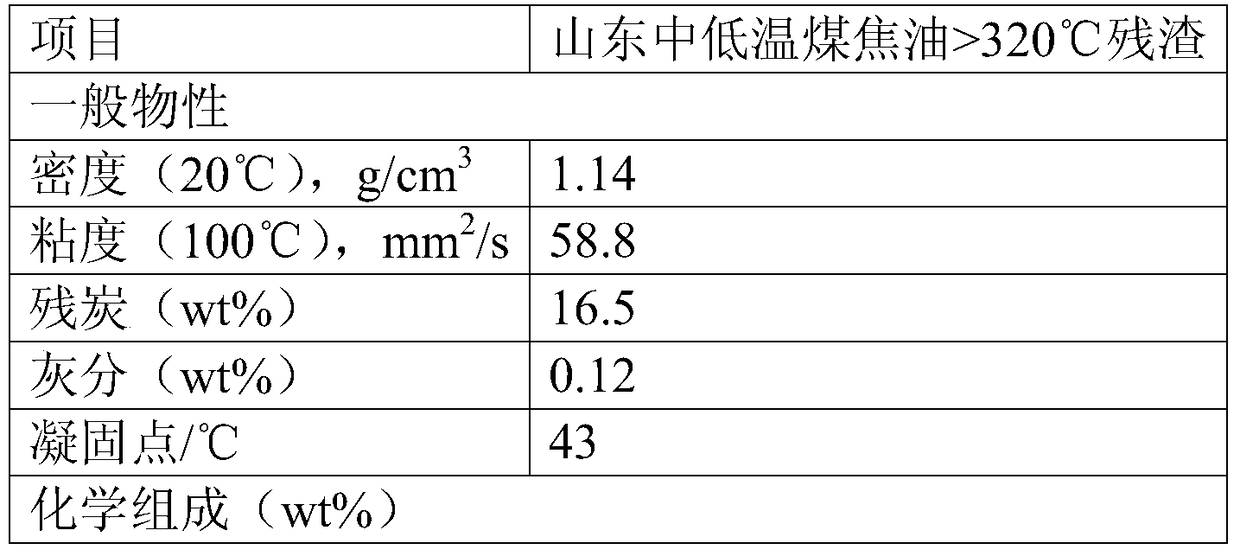A surface amphiphilic nano tungsten disulfide hydrogenation catalyst and its preparation method and application
A hydrogenation catalyst, tungsten disulfide technology, applied in physical/chemical process catalysts, nanotechnology for materials and surface science, chemical instruments and methods, etc., can solve the problem of complex composition and unsatisfactory dispersion of heavy oil and other problems, to achieve the effect of good application prospects
- Summary
- Abstract
- Description
- Claims
- Application Information
AI Technical Summary
Problems solved by technology
Method used
Image
Examples
Embodiment 1
[0027] This example illustrates the method of using 1-butyl-3-methylimidazolium tetrafluoroborate to prepare surface amphiphilic nano tungsten disulfide hydrogenation catalyst.
[0028] Add a certain amount of sodium dithiotungstate [Na 2 WO 2 S 2 ], make the concentration of tungsten reach 0.012mol / L, stir until uniform; add hydroxylamine hydrochloride to the above mixture, make hydroxylamine hydrochloride: sodium dithiotungstate (molar ratio) reach 4:1, stir until uniform; Add ionic liquid 1-butyl-3-methylimidazolium tetrafluoroborate to make 1-butyl-3-methylimidazolium tetrafluoroborate: sodium dithiotungstate (molar ratio) reach 22: 1. Stir until uniform, and prepare the initial reaction mixture; transfer the initial reaction mixture to a high-pressure synthesis kettle, and crystallize at 200°C for 5 hours. After the crystallization is completed, the reactant is cooled to room temperature, filtered, washed with deionized water and dried to obtain a surface amphiphilic n...
Embodiment 2
[0030] This example illustrates the method of using 1-propyl-3-methylimidazolium hexafluorophosphate to prepare surface amphiphilic nano tungsten disulfide hydrogenation catalyst.
[0031] Add a certain amount of potassium dithiotungstate [K 2 WO 2 S 2 ], make the concentration of tungsten reach 0.016mol / L, stir until uniform; add potassium borohydride in the above-mentioned mixture, make potassium borohydride: potassium dithiotungstate (molar ratio) reach 4:1, stir until uniform; Add ionic liquid 1-propyl-3-methylimidazolium hexafluorophosphate to the above mixture, so that 1-propyl-3-methylimidazolium hexafluorophosphate: potassium dithiotungstate (molar ratio) reaches 17: 1. Stir until uniform, and prepare the initial reaction mixture; transfer the initial reaction mixture to a high-pressure synthesis kettle, and crystallize at 180°C for 14 hours. After the crystallization is completed, the reactant is cooled to room temperature, filtered, washed with deionized water and...
Embodiment 3
[0033] This example illustrates the method of using 1-ethyl-3-methylimidazolium bromide to prepare surface amphiphilic nano-tungsten disulfide hydrogenation catalyst.
[0034] Add a certain amount of ammonium dithiotungstate [(NH 4 ) 2 WO 2 S 2 ], make the concentration of tungsten reach 0.4mol / L, stir until uniform; add polyethyleneimine to the above mixture, make polyethyleneimine: tungsten nitrate (molar ratio) reach 2.2:1, stir until uniform; Add ionic liquid 1-ethyl-3-methylimidazolium bromide to make 1-ethyl-3-methylimidazolium bromide: dithioammonium tungstate (molar ratio) reach 0.04:1, stir until uniform, Configured as an initial reaction mixture; the initial reaction mixture was transferred to a high-pressure synthesis kettle, and crystallized at 160°C for 36h. After the crystallization is completed, the reactant is cooled to room temperature, filtered, washed with deionized water and dried to obtain a surface amphiphilic nano tungsten disulfide hydrogenation cat...
PUM
| Property | Measurement | Unit |
|---|---|---|
| diameter | aaaaa | aaaaa |
Abstract
Description
Claims
Application Information
 Login to View More
Login to View More - R&D
- Intellectual Property
- Life Sciences
- Materials
- Tech Scout
- Unparalleled Data Quality
- Higher Quality Content
- 60% Fewer Hallucinations
Browse by: Latest US Patents, China's latest patents, Technical Efficacy Thesaurus, Application Domain, Technology Topic, Popular Technical Reports.
© 2025 PatSnap. All rights reserved.Legal|Privacy policy|Modern Slavery Act Transparency Statement|Sitemap|About US| Contact US: help@patsnap.com



